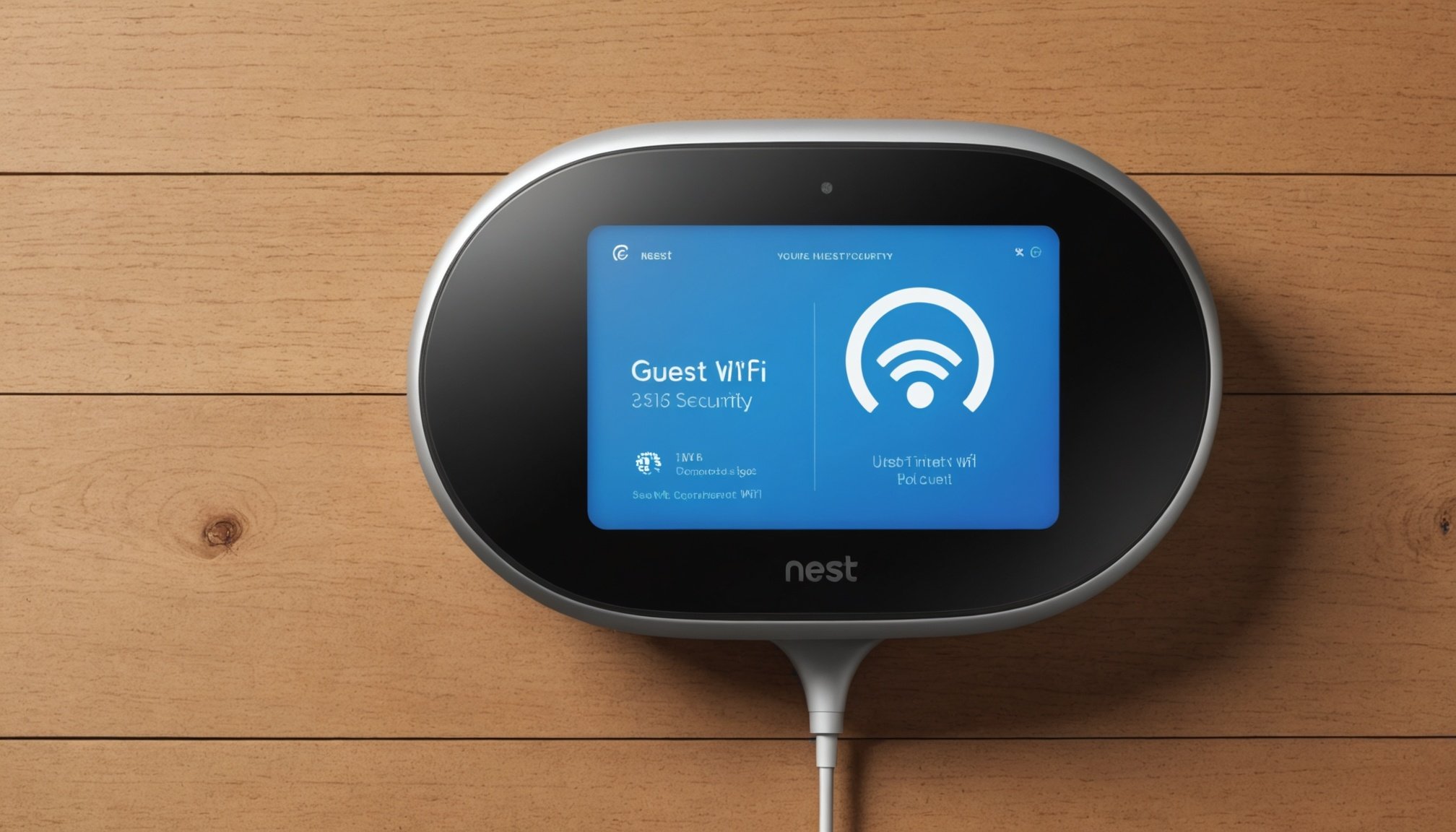Understanding Guest Wi-Fi Networks
In today’s connected world, Guest Wi-Fi networks provide a convenient way for visitors to access the internet without compromising your primary network. This kind of Wi-Fi allows guests to connect to the internet without gaining access to your home’s main network resources and devices, thus safeguarding your personal data. To efficiently use this feature, understanding the purpose and security aspects is crucial.
Implementing secure Guest Wi-Fi networks is vital for protecting your home network from potential threats. For instance, if a device connected to your guest network is infected with malware, it should not affect devices on your primary network. This separation is possible because Guest Wi-Fi uses a different network configuration.
In parallel : Ultimate guide to silencing your home recording studio using a tailored pc configuration
Moreover, products like Google Nest Wi-Fi make setting up a Guest Wi-Fi network straightforward. They allow users to create a separate network easily via their apps, reducing the technical barriers for average users. Such networks can also act as a first defense layer, isolating unwanted traffic and offering a secure internet connection for guests.
Proper configuration and maintaining secure network security protocols is vital. Always opt for the latest security standards, such as WPA3, to protect your network and ensure the passwords are robust and regularly updated.
Also to discover : Ultimate guide to boosting home network security with the netgear orbi rbk50 mesh system
Setting Up Guest Wi-Fi on Google Nest Wi-Fi
Establishing a Guest Network on your Google Nest Wi-Fi is straightforward. The process starts with understanding Google Nest setup, which can be intuitive even for those new to technology. By using the Google Home app, users can set up their guest Wi-Fi network easily, promoting accessibility for various devices without compromising the main network’s integrity.
Step-by-step guide to setting up guest Wi-Fi
Begin by opening the Google Home app on your smartphone or tablet. Navigate to the Wi-Fi settings section, and select “Guest Network.” This option allows you to create and customize a separate network for visitors. Enabling a Guest Network ensures that guests have access to the internet while your home network remains secure and isolated.
Accessing Google Home app for configuration
Accessing the app is simple: ensure your device is connected to the internet, open the app, and follow the prompts for Guest Network Configuration. This step is crucial in managing who can connect and what level of access they are granted. Here, you can assign a unique name and create a robust password, further enhancing network security.
Customizing guest network settings
Customizing settings involves selecting security protocols and defining internet access levels. Consider setting time limits for guest access to enhance security. Such customization helps in maintaining control and assures guests’ internet usage stays within designated parameters. These measures facilitate a seamless and secure experience.
Security Settings for Guest Networks
Understanding and optimizing network security settings is crucial in maintaining a safe environment when providing Guest Wi-Fi. Firstly, choosing a security protocol such as WPA3 is advisable, as it offers robust features superior to WPA2, enhancing Wi-Fi protection through improved encryption standards.
Efficient password management is another key aspect. It’s essential to use strong, unique passwords and update them regularly to prevent unauthorized access. Consider employing passphrases, combining letters, numbers, and special characters to strengthen security further.
Enabling network isolation features is as critical as setting secure passwords. Network isolation ensures devices on the guest network remain separate from the main network, safeguarding your primary network resources. This feature prevents guest devices from interacting with core devices, providing an additional layer of security.
Implement features like automatic lockdown, which disables a device’s access after repeated failed password attempts. These steps significantly minimise the risks of breaches, maintaining the integrity of your Guest Wi-Fi. Given the evolving landscape of network threats, continuous assessment and updating of your network security settings are paramount to defending against potential vulnerabilities.
Adhering to these practices ensures that your guest network remains secure and up-to-date, providing safe and reliable access for visitors.
Best Practices for Managing Guest Wi-Fi
Effectively managing a Guest Network involves several key practices to maintain security and convenience. One essential step is regularly updating your network settings and passwords. This not only enhances Wi-Fi Protected Access but also helps in safeguarding against emerging threats. You should aim to create strong, unique passwords and change them periodically to ensure guest access remains secure.
Monitoring guest network usage is another crucial aspect. This includes keeping an eye on the number of connected devices and their internet activities without infringing on privacy. Such measures help in identifying unusual patterns that could indicate potential issues, allowing for timely intervention.
Consider implementing time-limited access for guests. Setting a duration for how long they can stay connected ensures that the network is not being unnecessarily utilized. It is an efficient way to manage bandwidth and prevent unauthorized prolonged access.
Engage in Guest Network Management by utilizing features like access schedules and device filtering available in your Google Nest Wi-Fi. These tools provide a comprehensive approach to balancing security with user experience. By adhering to these Wi-Fi Best Practices, you can offer a seamless yet secure experience for all users, protecting both personal and guest data.
Troubleshooting Common Issues
Encountering problems with your Google Nest Wi-Fi can be frustrating, but understanding how to address these issues promptly is crucial. When facing Wi-Fi troubleshooting challenges, identifying connectivity problems is the first step. Begin by checking your internet connection and ensuring all cables are properly connected. Often, reconnecting the modem or restarting the Google Nest router can resolve many temporary issues.
Next, resolving device compatibility problems involves ensuring that your devices support the frequencies offered by Google Nest Wi-Fi. Devices not recognising your network could be incompatible with certain frequencies, such as 5GHz. Ensuring that firmware updates are installed on both your router and devices can alleviate many Wi-Fi issues and improve compatibility.
In situations where network security is compromised, act quickly to protect your data. Change your network’s Wi-Fi password immediately and notify connected users of the new password. Additionally, review device permissions on your Guest Network and remove any unrecognised devices to prevent unwanted access. Use the Google Home app to monitor connections and adjust settings.
By understanding these common issues and employing effective solutions, managing your Google Nest Wi-Fi becomes straightforward, ensuring smooth and secure connectivity for all users.
Recognizing and Mitigating Security Threats
In the realm of Guest Wi-Fi networks, being vigilant against potential network threats is crucial. Cybersecurity measures offer a robust framework to safeguard against common issues like unauthorized access and data breaches. These threats may arise from unmonitored devices connecting to your guest network, potentially exposing vulnerabilities within your network system.
To combat these challenges, employing tools that consistently monitor network activity is essential. Such tools can quickly identify unusual patterns that may signal security threats. By integrating real-time alerts, these systems can prompt immediate action should any irregularities be detected.
When facing a suspected breach, rapid response is key. Start by isolating the affected network segments to prevent further access. Update all existing passwords with emphasis on complexity and strength. Ensure all devices connected to the Google Nest Wi-Fi are recognised and approved.
Beyond immediate actions, regular cybersecurity measures such as firmware updates on routers and using updated security algorithms like WPA3 are recommended. This ensures the network maintains the highest level of protection. Awareness and proactive monitoring can significantly reduce the risk of security threats, maintaining a secure environment for all users on the Guest Wi-Fi.











